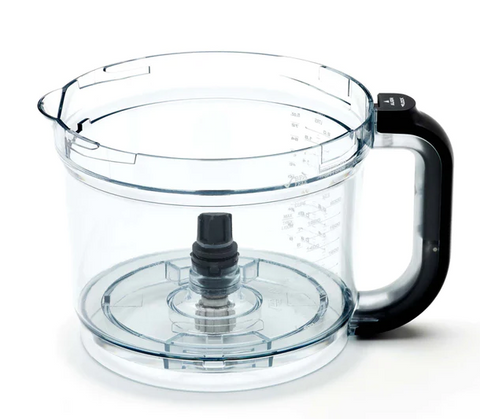Food processors save time. They chop, slice, puree, and knead. They make cooking more efficient and open up a world of culinary possibilities. But like any workhorse appliance, a food processor has parts that endure wear and tear or might need replacing. Understanding these Kenwood, Breville food processor parts empowers you to make the most of your food processor.
Food Processor Bowls

The work bowl is where the food processing action happens.
-
Material:
Plastic: Lightweight and affordable, but prone to scratches and staining.
Glass: Heavy, but doesn't stain and allows you to see the food inside.
Stainless Steel: Durable and looks sleek, but can be noisy.
-
Size:
Food processors come in various bowl capacities. Choose one that suits how much you usually cook.
-
Cracks and Leaks:
Damaged bowls need replacing. Sometimes just the seal/gasket is compromised.
Additional Food Processor Parts
-
Feed Tube:
The opening is where you add ingredients while the processor is running.
-
Pusher:
Used to safely push food down the feed tube. Never use your hands!
-
Lid:
Seals the bowl and often has safety interlocks, so the processor won't run without it in place.
-
Attachments:
Some models offer extra attachments like juicers, blenders, or citrus presses.
Troubleshooting Food Processor Problems
Here are common issues and their likely causes:
Processor Won't Start
- Power: Is it plugged in and is the outlet working?
- Lid: Check if it's properly secured. Many models won't run unless the lid is correctly in place.
- Overheating: Some processors have thermal protection and shut off if they overheat. Let it cool and try again.
- Motor: Motor failure often means the food processor needs replacing.
Leaking Bowl
- Cracks: Check the bowl for damage.
- Seal: The gasket around the base may need replacing if it's worn or loose.
Food Isn't Chopped Evenly
- Overloading: Too much food prevents the blade from moving freely. Process in batches.
- Dull Blades: Sharpen or replace the blade if needed.
Food Processor Care Tips
- Clean After Each Use: This prevents food from drying and becoming difficult to remove.
- Hand-Wash Blades: Dishwashers can dull blades over time.
- Don't Overload: It strains the motor and can lead to damage.
- Follow Instructions: Your processor's manual will have specific capacity guidelines.
Important Note
Always unplug your food processor before cleaning or disassembling it. Blades are extremely sharp - handle them with care!
Final Words
A well-cared-for food processor can last for years. Understanding its components and how they work gives you the knowledge to tackle straightforward fixes and empowers you to make the most of this powerful kitchen tool. Join the Steve Appliances community and find the best food processor in NZ.

